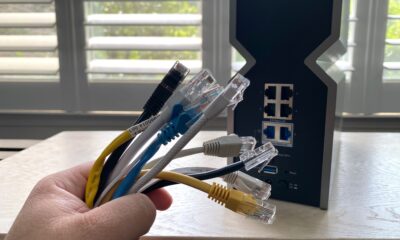Technology
How I Secured My Smart Home Without Internet Access

Concerns over cybersecurity have prompted individuals to rethink their smart home setups. A recent personal initiative illustrates how one homeowner successfully blocked internet access to their smart devices while maintaining remote control capabilities. This approach emphasizes local control and enhanced security in a landscape fraught with vulnerabilities.
The homeowner recognized that many Internet of Things (IoT) devices often come with unpatched security holes, exposing homes to potential breaches. In an effort to mitigate these risks, they decided to implement a strategy that involved isolating all smart devices on a dedicated Virtual Local Area Network (VLAN). This step effectively prevented these devices from accessing the wider Internet.
While the task of blocking internet access was straightforward, the challenge lay in retaining the ability to control devices remotely. The homeowner initially considered several options, including using the Nabu Casa cloud subscription for Home Assistant, a popular smart home management tool. Ultimately, they opted for Tailscale, a software that facilitates secure remote access without exposing smart devices to the Internet.
Home Assistant served as the central management platform for the homeowner’s smart devices. To streamline control, all devices were connected through a dedicated access point and assigned to the VLAN. The homeowner leveraged the Zigbee protocol, known for its local connectivity, to reduce concerns about device security. They replaced a few incompatible devices with newer models to ensure full integration.
To enhance security further, the homeowner configured firewall rules using OPNsense. This setup allowed Home Assistant to communicate with the main local area network while blocking any unwanted traffic from the IoT VLAN. By implementing mDNS reflection, local smart device services remained functional without needing internet access.
The final step involved setting up Tailscale, which enabled remote access to Home Assistant from any device on the Tailscale network. This setup allowed the homeowner to control their smart devices as if they were physically connected to the local network, providing peace of mind.
The decision to forgo direct internet access for smart devices reflects a growing awareness of cybersecurity risks. Automated scanning and AI have intensified vulnerabilities, making the presence of unmonitored devices even riskier. By taking control of their smart home environment, the homeowner not only enhanced security but also ensured convenience.
They set up automations to manage devices when leaving home, eliminating the need to remember remote access. This approach demonstrates a practical balance between security and convenience, allowing for efficient management of smart home technology without compromising safety. As smart devices continue to proliferate, solutions like this may become increasingly relevant for those seeking to protect their home networks.
-

 Technology4 months ago
Technology4 months agoDiscover the Top 10 Calorie Counting Apps of 2025
-

 Health2 months ago
Health2 months agoBella Hadid Shares Health Update After Treatment for Lyme Disease
-

 Health3 months ago
Health3 months agoErin Bates Shares Recovery Update Following Sepsis Complications
-

 Technology3 weeks ago
Technology3 weeks agoDiscover 2025’s Top GPUs for Exceptional 4K Gaming Performance
-

 Technology2 months ago
Technology2 months agoElectric Moto Influencer Surronster Arrested in Tijuana
-

 Technology4 months ago
Technology4 months agoDiscover How to Reverse Image Search Using ChatGPT Effortlessly
-

 Technology4 months ago
Technology4 months agoMeta Initiates $60B AI Data Center Expansion, Starting in Ohio
-

 Technology4 months ago
Technology4 months agoRecovering a Suspended TikTok Account: A Step-by-Step Guide
-

 Health4 months ago
Health4 months agoTested: Rab Firewall Mountain Jacket Survives Harsh Conditions
-

 Lifestyle4 months ago
Lifestyle4 months agoBelton Family Reunites After Daughter Survives Hill Country Floods
-

 Technology3 months ago
Technology3 months agoUncovering the Top Five Most Challenging Motorcycles to Ride
-

 Technology4 weeks ago
Technology4 weeks agoDiscover the Best Wireless Earbuds for Every Lifestyle













